As a kid, I remember staring at our goldfish tank for hours.
There was only one thing in the tank that interested me more than the fish…
The bubbles.
The way they floated through the water in a hypnotizing rhythm was fascinating.
That was my first experience with an aquarium bubbler… A memory that was long forgotten until a beginner aquarist asked me:
What do aquarium bubblers do?
It was that very question, along with the fond memories, that inspired this article.
Today, I am going to teach you everything you need to know about aquarium bubblers!
Contents
What is an aquarium bubbler?
A bubbler refers to any device that attaches to an air pump, via an airline tube, in order to create bubbles inside your aquarium.[1]
Examples of bubblers include airstones, bubble wands and bubble walls.
Aquarium bubblers are typically run 24/7.
What does an aquarium bubbler do?
On its own, a bubbler performs two helpful functions:[2]
1. Aerate the water
Just like you and me, fish need to breathe.
To do this, fish draw dissolved oxygen out of the water – without it, most breeds of fish will suffocate.
Bubblers add oxygen to your aquarium. But not how you think…
It may seem like oxygen would enter the water from the bubble. But this only contributes an incredibly small amount, so little in fact that it is barely worth mentioning.
Most of the oxygen in your aquarium enters from the surface and dissolves into the water through a process known as gas exchange.
When the surface is still, less oxygen enters the water than when it is moving.
Think about fish that live in rivers and oceans. The visible water on the surface is constantly moving, allowing for a greater amount of oxygen to enter the water.
A bubbler does the same thing, on a much smaller scale.
As the bubbles rise, they agitate the surface, allowing a greater amount of oxygen to enter the water.
2. Increase water movement
As the air bubbles rise in fish tank, water rises with them. This creates a current that circulates water around your tank.
Because the bubbles gently rise, the result is often a gentler water flow than if using a powerhead that shoots across the fish tank.
Of course, if you already have a good fish tank filter, lily pipe or spray bar providing circulation, then there is hardly any benefit to adding a bubbler… Which brings me to my next point…
Do you need an aquarium bubbler?
An aquarium bubbler is a funny piece of equipment.
In many fish tanks, the benefits of a bubbler can readily be achieved with equipment that is already in the tank.
For example, you could aim your filter return toward the surface of the water or use a circulation fan to similar effect.
Saltwater fish tanks in particular should have filtration and circulation that beat any bubbler.
However, for smaller freshwater setups, an aquarium bubbler can be beneficial.
Whether you need an aquarium bubbler entirely depends on your setup. Many people use bubblers when creating a DIY equipment such as sponge filters – the bubbler is used to “drive” the filter, causing it to draw in water.
If your water is not circulating or low on oxygen, then a bubbler could be just what you need!
Note: The breed of fish also determines whether you need a bubbler. Certain fish have adapted to stagnant water, like betta, and can even draw water from the surface. In this case, the water movement caused by a bubbler can actually stress the fish.
What are the downsides to aquarium bubblers?
If you are considering a bubbler for your aquarium, there are a couple of downsides that you should be aware of:
1. Bubblers are clearly visible
This downside is a matter of personal taste.
It is difficult to ignore the rising trail of bubbles emitting from an aquarium bubbler.
Even if you hide the aquarium bubbler behind plants or in the substrate, the stream of bubbles is clearly visible.
While some aquarists, or me as a child, find that the stream of bubbles enhances aquariums, others think they are ugly and unnatural – not exactly suitable for a display tank.
2. Bubbles can promote salt creep in saltwater tanks
Let’s face it – if you have a saltwater fish tank, you are not likely to buy a bubbler anyway.
But just in case you were considering it…
A bubbler can make salt creep worse.
While you might not be able to see it, when the bubbles pop at the surface of your aquarium, they splash tiny amounts of water.
On its own this wouldn’t be a problem. But in a saltwater fish tank, as the water dries, it leaves behind a small amount of salt crystals.
It is for this reason that most saltwater tank owners recommend using a circulation pump, also called a circulation fan or wave maker, since it can provide the same benefits as a bubbler without the salt creep.
What are the different types of aquarium bubblers?
Bubblers come in different shapes and sizes. Below I cover some of the most common types of bubblers you will come across.
Simply place these bubblers on the end of your airline to fill your aquarium with bubbly goodness.
1. Airstones
Cheap and effective, airstones are the most common type of aquarium bubbler.
Despite the name, airstones can be made from any porous substance including wood, sand, stone and even plastic.
Airstones can be small…
Large…
Or, come in any shape…
The size of the bubbles depends on the coarseness of the airstone. A rough airstone will diffuse larger bubbles while a fine airstone will diffuse tiny bubbles that you can barely see.
2. Bubble wands
While these are essentially just long, narrow airstones, they are commonly referred to as bubble wands.
The bubble wand gives off a wall of bubbles, lending the aquarium a distinctly different look to smaller airstones.
Most bubble wands come with suction cups to prevent them from floating around your aquarium.
3. Flexible bubble walls
Bubble walls come in a variety of different lengths and are made from a flexible rubber material. The bubble wall can be twisted, coiled or spread around the tank in any way that you see fit.
Small holes are dotted along the surface to let bubbles escape from the hose and into the water.
If you are considering using a bubble wall, be aware that you will need to clamp or weigh the hose down – especially if you are trying to display your bubble wall horizontally. Otherwise, it will float to the surface.
4. LED bubbler
Let there be light!
An LED bubbler is essentially an airstone with an LED light. In addition to needing an air pump, this bubbler also needs to be plugged into an electrical outlet.
As the colored light shines through the bubbles, it creates a mini aquarium light show, especially when paired with GloFish. [3]
Most LED bubblers come with a remote control, allowing you to change the color to match the décor of your room.
5. Bubbler ornament (decorations)
Bubbler ornaments can take on any shape or size – from sunken treasure chests that open and close to small-scale cities. There are no limits!
Despite the wide variety of sizes, bubbler ornaments often use one of the previously mentioned ways to create bubbles – typically an airstone.
Which bubbler makes the smallest, finest bubbles?
There is no arguing. If you want the smallest, finest bubbles possible, you want an airstone made from limewood.
Despite the name, this wood doesn’t come from a Lime tree but rather Lindens. The wood from these trees contains tiny pores and when air is pumped through it, it diffuses bubbles in a fine mist.
Note: If your protein skimmer requires fine bubbles to operate, limewood is exactly what you need. Just remember that you will need to change the airstone every 3-6 months because they will eventually clog in the salt water.
Why isn’t your aquarium bubbler working properly?
The effectiveness of a bubbler depends entirely on the strength of your air pump. One that is too weak won’t be able to provide the pressure needed to push air through and create bubbles.
This is a problem most commonly seen with larger aquarium bubblers where the air pump is not powerful enough to push air through the entire surface of the bubbler.
The problem is easily overcome by purchasing a stronger air pump.
If you notice that bubbles only exit from the base of your bubbler, it’s possible you have a leak. This is particularly common with cheaper airstones where the base has not been glued on properly.
In most cases, you will be able to fix this problem by using epoxy resin to seal the leak.
Conclusion
While aquarium bubblers are not ideal for every setup, they still have their uses.
Do you want to learn more about the bubblers? Then read about other parts connected to them, such as air check valves, airline control valves, and airline tubing.
Do you use a bubbler in your aquarium? Let me know in the comments below!

Ian Sterling, founder of Fishlab.com, began his aquarium journey over 30 years ago, driven by a deep fascination for fish and their diverse personalities. His website, Fishlab.com, is dedicated to making fishkeeping accessible and enjoyable, offering beginner-friendly guidance, expert insights, and a community for aquarists to connect and share experiences.


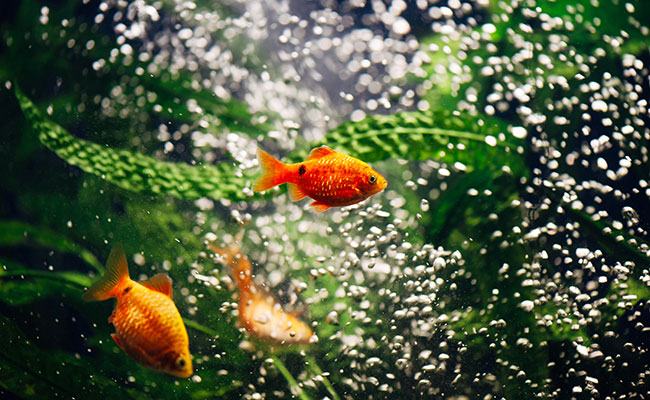
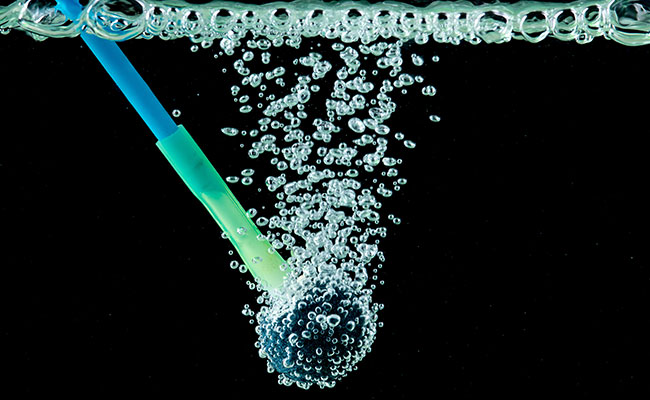
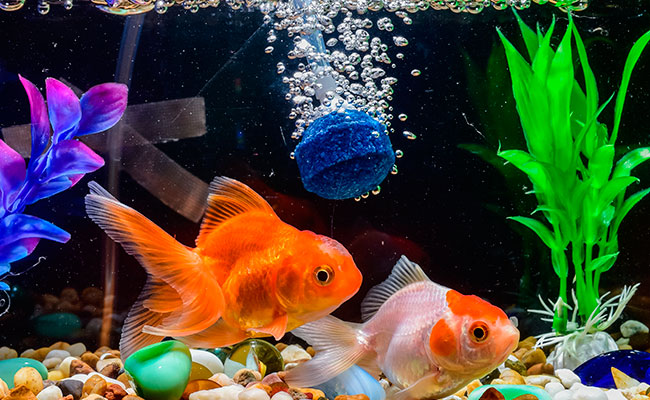
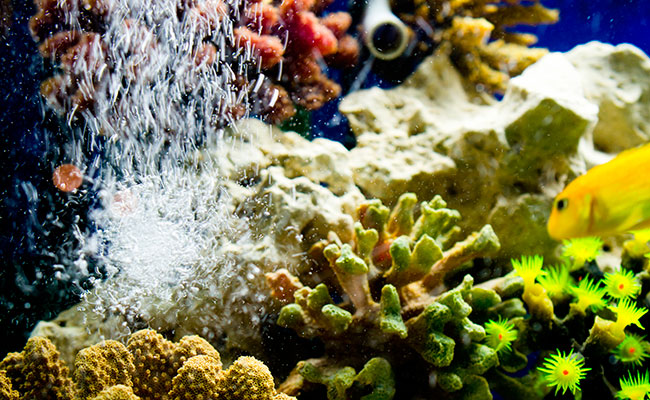
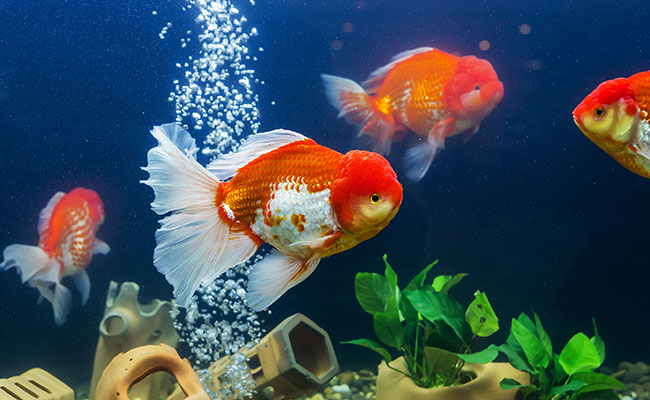
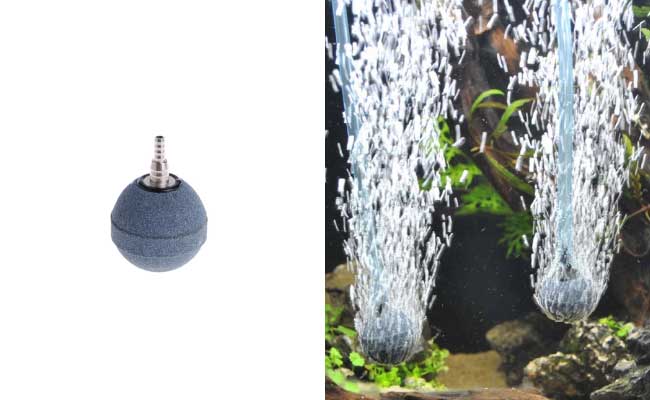
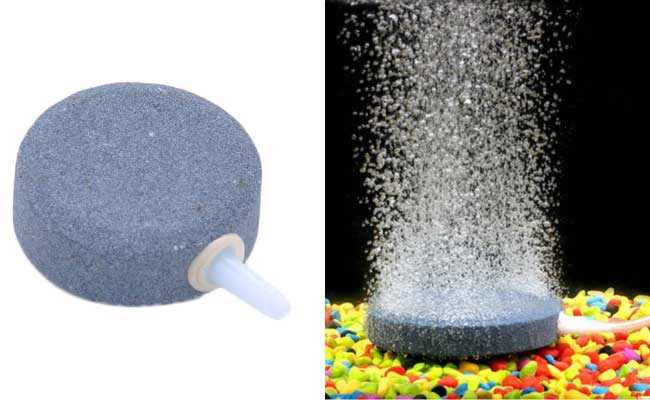
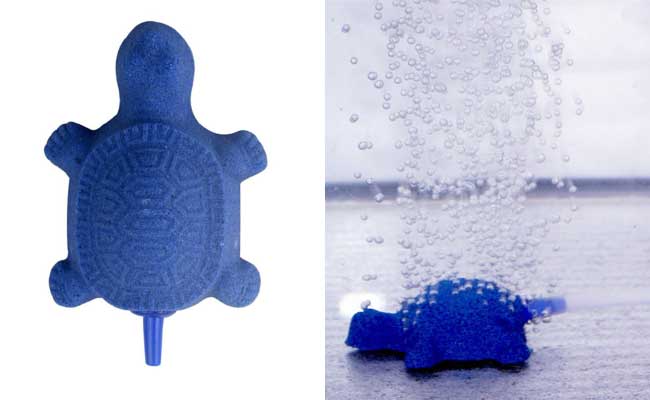
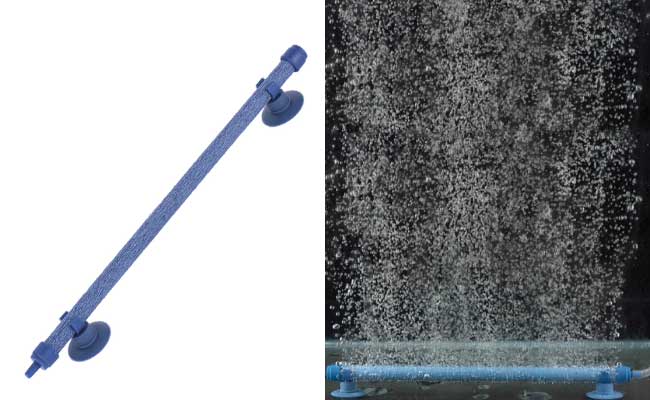
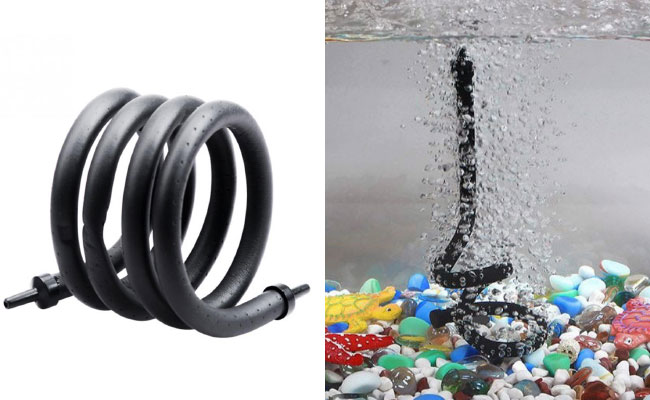
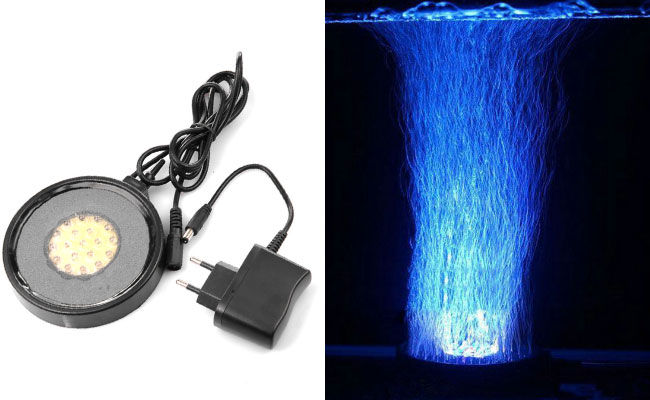
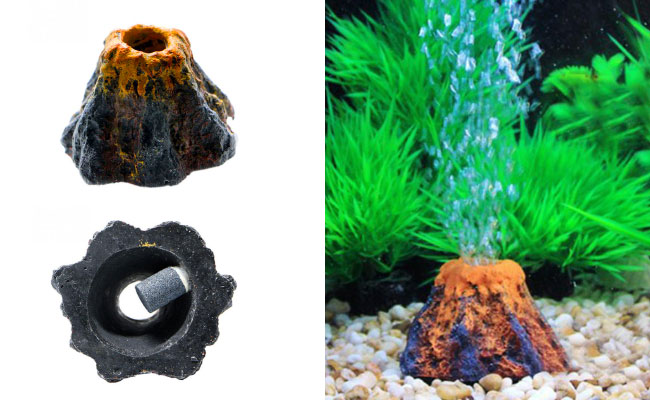
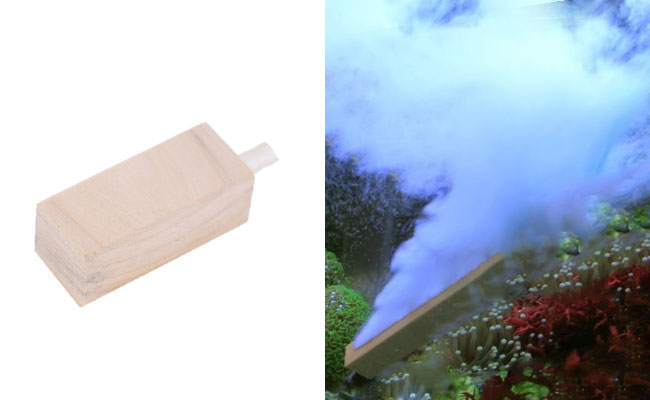
Comments (16)
I found your article very helpful. Longtime fish owner and aquariums. I bought an aquarium at a garge sale and they had many bubblers with it. Never used them before. I’m just getting them out and using them. I like them. I have a 5 inch and a 3inch cichlid. Is a 29 gallon tank big enough for those two? So far OK. Cathy T.
We decided to add a bubbler just in case the water filter goes down. Had this happen twice and lost my prize fish.
Love this article! I am a beginner and I want to offer the best life I can to my fish. You completely answered my question. I to absolutely find watching my fish swim around so peaceful, but the bubbles add a certain tranquility to the tank that, to me is just beautiful. Also I’ve noticed the waste is not just sinking to the bottom of my tank now that I’ve added bubble stones, instead the bubbles are creating a constant flow allowing the Waste and debris from food to make its way to the filter… I think it is probably the best choice for my fish aquarium ????
I have a small 10 gallon tank for my goldfish since they are still small and I am currently in the process of bringing in a much larger tank. My bubbler is partially buried and since my water filter creates enough water circulation and surface disturbance to keep the oxygen level high enough I actually use my bubbler to kick up sludge and small bits of food etc that gets stuck on the bottom of the tank so I can scope it out or allow the filter to suck it up. I use a bubble wand so it spans across the tank. I know this is an unconventional use for a bubbler but it has made maintenance of my tank much easier.
I was taught that the bubble popping at the surface is how oxygen was injected into the water since most tanks didn’t use live plants to provide the oxygen,,, was I taught wrong,,, because ponds don’t have moving water,,, but they are normally filled with plants and stuff creating very small bubbles that rise to the surface and pop. I am very curious now.
Hi Ken,
Oxygen actually enters the water through the surface layer. You can learn more about this process in our oxygen guide.
I have a 10 gallon tank would a 20 gallon bubbler be to big for it or will it be alright
Hi Jeffrey,
Sizing of airstones isn’t too much of an issue as you can You can always adjust the air flow to suit your tank, while some air pumps allow you to regulate the airflow, you can also use a air control valve or preferably a bleed valve.
Do led wall bubble make more algae in your tank?
Ho Carole,
No, a bubble wall will not affect your water quality. Only the water movement and surface agitation.
I have a bubble wand that I buried in the substrate to hide. It works fine, but every once in a while, some of the holes get clogged by detritus. I have to dig out the bubble wand and poke the hole that was clogged. How do I prevent the bubble wand from clogging? It is not convenient digging it out everytime because the water will get cloudy.
Hi Alexa,
Unfortunately, there isn’t really a way around this, unless you want to swap out to a coarser substrate or hide the bubble wand behind rocks.
Where do I purchase epoxy resin? Thank you. Your article was very helpful.
Hi Brenda,
Your local hardware store should have it in stock. Otherwise you can order it online.
I’m setting up a 5 gallon brine shrimp tank for fish feeding purposes and was wondering would a medium round bubbler work or should I go smaller? If I shouldnt use the round one which bubbler would be better suited for my tank?
Hi Tana,
It shouldn’t matter too much if this is solely for feeding purposes. You can always control the airflow by using a bleed valve on the airline tubing that sits between your air pump and blubber.